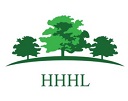



from Redstone L.J., Our East Anglian Heritage
or Between the Wash and the Stour, Methuen, London, 1939
The hard lives which were lived by most East Anglian farmers in the reign of Queen Elizabeth are described by Thomas Tusser, who, though his own farms act Cattiwade on the Stour and at West Dereham in Norfolk were far from prosperous, was yet ready to give others much good advice, which he put into rhyme:
'Good husbandmen' (said he) 'must moile and toile
To laie to live by laboured field:
Their wives at home must keepe such coile,
as their like actes may profit yield.'
In Tusser's time, and for more than a century after, root-crops were rarely grown, and cattle were still killed off year by year for lack of winter food for them. But Charles, Viscount Townhend, who retired to Raynham to study the use of good farming of his own estates in 1730, introduced the use of turnips upon a large scale, and so changed the whole system of farming the light lands of Norfolk and Suffolk. 'Turnip' Townshend, as he was called, and, somewhat, later, 'Coke of Holkham' who became Earl of Leicester, showed the whole world what goo farming can do for a poor soil.
Since Young's time there have been even more rapid and remarkable changes in farming. One was the adoption of chemical fertilizers, which originated in the use of coprolite dug out of the earth near Felixstowe.
The skilled Anglian farmers had increased their flocks of sheep greatly by the time of the Norman conquest. On either side of the central woodlands of East Anglia sheep were numerous, and were valued for their milk and for cheese, as well as for their fleece. There were also unusually large flocks in the Norfolk marshlands, as at Walton, where there were 1,300, while the Breckland flocks at Mildenhall, in Suffolk, numbered 1,000, and there were nearly as many at Downham and Eriswell.